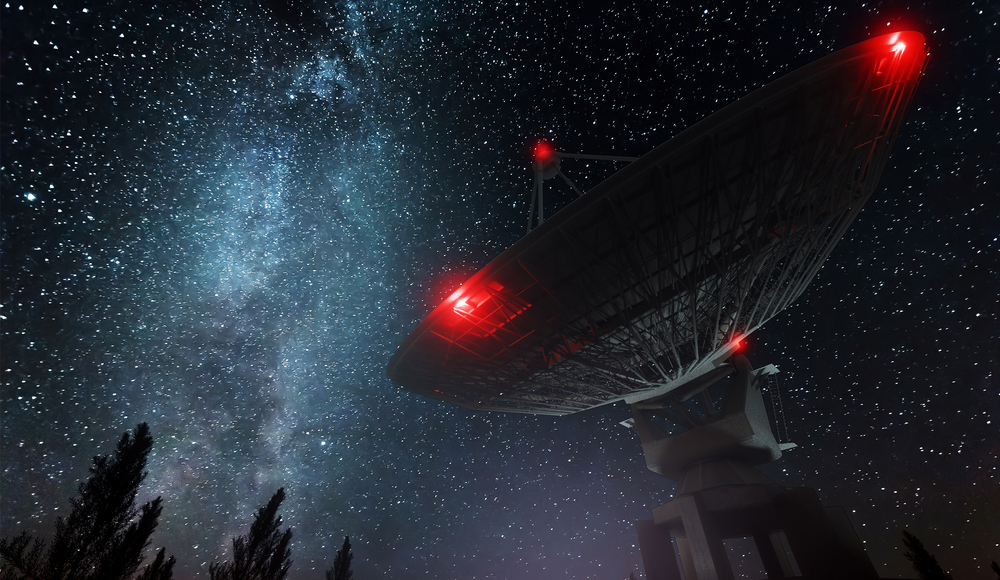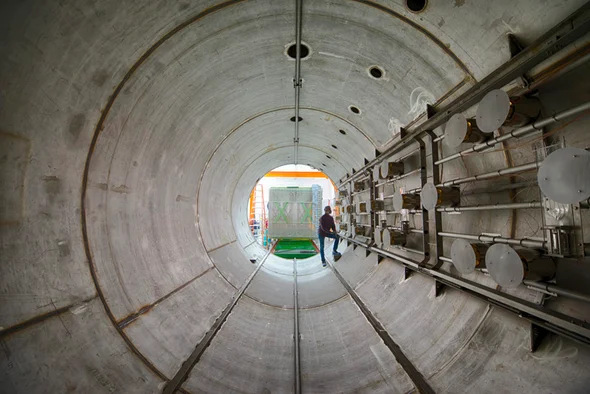Does Astro-Archaeology Appeal to Intelligent Agency?
Are we alone in the universe? Are there alien civilizations scattered throughout our galaxy—and beyond?
From a scientific point of view, these questions fall under the purview of SETI (the Search for Extraterrestrial Intelligence). And for the most part, SETI’s approach has focused on searching for radio and optical signals intentionally broadcast by alien civilizations. But should their strategy include searching for artifacts from these civilizations?
In his recent book Extraterrestrial, Harvard astronomer Avi Loeb argues that searching exclusively for radio and optical signals stacks the odds against success for SETI.1 If human history is any indicator, alien civilizations will only possess the technology to communicate their presence for a fraction of the time they exist. These broadcasts won’t begin until these civilizations become highly advanced. And the duration of the broadcasts will be cut short if the civilizations collapse or disappear altogether.
Instead, Loeb argues that SETI investigators need to expand their search to include long-lasting evidence for alien life, such as biosignatures (e.g., oxygen and methane in the atmosphere) and technosignatures (i.e., pollutants).
As Loeb also points out, humans have been generating radio emissions at the meter-wave radio spectrum for decades. These emissions are a type of radio pollution. If we are generating that type of electromagnetic pollution, then why wouldn’t alien civilizations do so, too? Loeb believes SETI should direct some of its resources to search for these types of signatures.
Finally, Loeb proposes a different strategy for SETI altogether—an approach he calls astro-archaeology. In this vein, Loeb argues that SETI should search for the relics of alien civilizations. He points out that we have deliberately sent five spacecraft (Voyager 1, Voyager 2, Pioneer 1, Pioneer 2, and New Horizons) out of our solar system into interstellar space. Why wouldn’t alien civilizations do the same? Additionally, Earth’s orbit is now littered with space debris from derelict spacecraft and rocket launches. Again, Loeb expects alien civilizations to leave behind the junk from their activities in space, too. In fact, Loeb believes that SETI may have better success by expanding its search to include spacecraft and space debris generated by alien civilizations than by focusing its attention on broadcast radio and optical signals. Once these artifacts are produced, they will last far beyond the alien civilization itself.
Oumuamua
Loeb believes that astronomers unwittingly discovered an alien artifact in the fall of 2017. Over the span of 11 days (beginning October 19, 2017), the Panoramic Survey Telescope and Rapid Response System (Pan-STARRS)—a network of telescopes and high-definition cameras positioned on top of Maui’s dormant volcano Haleakala—recorded observations of an unusual interstellar object, 1I/2017 U1 (nicknamed Oumuamua), that fills the bill of alien technology—at least in Loeb’s opinion. If so, this object would stand as the first evidence for the existence of an alien civilization beyond our solar system.
Oumuamua came from the Vega star system (which is about 25 light-years away), moving through our solar system with a hyperbolic trajectory at 58,900 miles per hour. It spent about a month in our solar system before exiting towards the constellation Pegasus. Pan-STARRS observed Oumuamua during its final days in our solar system.
Most astronomers don’t agree with Loeb. Instead, they interpret Oumuamua as an asteroid or comet of interstellar origin—albeit one with some unusual and unexpected properties. Yet, for Loeb, it is these unusual properties that lead him to conclude that this object is alien technology.
In the face of the widespread skepticism confronting Loeb’s proposal, he uses Extraterrestrial as the vehicle to present a systematic, multi-pronged case that Oumuamua is, indeed, an extraterrestrial spacecraft.
Is Oumuamua Alien Technology?
First, Loeb notes that Oumuamua has an anomalous shape, at least 5 to 10 times longer than wide. The aspect ratio of Oumuamua would be the most extreme ever observed for an asteroid or comet. Loeb maintains that this aspect ratio would fit an object that is either shaped like a cigar or pancake. In fact, Loeb claims that astronomers know of no natural process mechanism that could generate these shapes for comets or asteroids.
Loeb also calls attention to the reflectivity of Oumuamua. It is about 10 times more luminous than any known asteroid or comet.

credit: Shutterstock
As Oumuamua’s orbit took it past the Sun, its trajectory changed. This change is expected because of the influence of the Sun’s gravity. But the change in the trajectory far exceeded what the Sun’s gravity alone could have achieved. Something generated a propulsive force as Oumuamua moved past the Sun. But, as Loeb points out, no natural process mechanism can account for Oumuamua’s acceleration. If Oumuamua experienced outgassing as the Sun warmed volatiles associated with it, then this could change its trajectory. But astronomical measurements failed to detect any water, carbon-based gases, and dust coming off Oumuamua’s surface. If Oumuamua disintegrated, this process could accelerate it as well. But, once again, astronomers failed to detect the expected change in spin that should accompany disintegration. Also, they noted that the change in acceleration was unexpectedly smooth and continuous, not jerky, as expected if Oumuamua disintegrated.Another unusual feature of Oumuamua is its origin in velocity position. Before it was accelerated by the Sun, Oumuamua occupied the local standard of rest (a frame of reference in which the velocities of neighboring stars average out to zero). This velocity position rarely occurs for astronomical objects.
In other words, the properties and behavior of Oumuamua are difficult to explain if this object was an interstellar comet or asteroid. But, according to Loeb, all of the data fits his hypothesis if Oumuamua were a light sail launched by an alien civilization.
The Light Sail Hypothesis
The basis for this proposal comes from another project on which Loeb worked, dubbed the Star Shot Initiative. This project was funded by entrepreneur Yuri Milner, with the objective of reaching the closest star system—(Alpha Centauri) which consists of three stars located 4.27 light-years from Earth—within Milner’s lifetime, collecting data that should provide insight into the prospects of alien life in the star system and sending the data to Earth.
Achieving this objective would require a spacecraft that can travel one-fifth the speed of light. This would require a lightweight spacecraft with a light payload. Loeb and his collaborators demonstrated that such a craft could be built by attaching a small electronic device (comparable to a small smartphone) to a reflecting sail that would be propelled by the pressure exerted on it by solar radiation.
A light sail would have the extreme aspect ratio displayed by Oumuamua. It would be accelerated by light coming from the Sun, smoothly changing its trajectory as it moved through the solar system. It would also be at the local standard of rest if it was released at the local standard of rest at the outskirts of its star system of origin.
According to Loeb, if we could conceive and design a light sail, then why wouldn’t an alien civilization do the same? If launched at its local standard of rest, then it is unlikely that Oumuamua would be space junk, according to Loeb. It would be much more akin to a buoy intentionally launched in space until our solar system collided into it.
Oumuamua and the Science of Design Detection
I find Loeb’s argument to be probative. Yet, I don’t have the expertise to judge the merits of his case effectively. (I will leave that task to astronomers.)
As an old-earth creationist and a biochemist—who holds the view that life stems directly from the handiwork of a Creator—I find Loeb’s case to be instructive, serving as a template that can be used to make the case that living systems stem from the work of an Intelligent Agent.
Specifically, Loeb uses three criteria to argue that Oumuamua is the work of extraterrestrial intelligence (i.e., intelligent agency):
- Absence of a compelling explanation for Oumuamua based on natural processes/mechanisms
- Oumuamua’s artificial characteristics
- An assessment of what it would take to build a spacecraft with Oumuamua’s capabilities
Loeb also speculates about the purpose of Oumuamua and suggests the possible motivation behind its launch. In the process, he draws upon our activities and motivations as human beings, using them as a gage for what alien civilizations might do.
In many respects, the criteria Loeb uses are identical to the criteria archeologists use to determine if a stone has been shaped by natural forces or by the deliberate action of a hominin (i.e., an intelligent agent). This similarity shouldn’t be surprising because Loeb’s work falls under the umbrella of astro-archaeology.
Loeb’s work affirms a point that I (and others) have repeatedly made. Science has the toolkit to detect the work of agency in nature. To put it another way, Loeb’s thesis demonstrates that detection of intelligent design in nature is legitimately part of the construct of science.
Design Detection in Biochemical Systems
So, why not apply the same criteria to biochemical systems? Regardless of worldview, no one disputes that biochemical systems have the appearance of design. The debate centers around the source of this design. And, based on Loeb’s analysis, science has the toolkit to determine if that design stems from a mechanism or mind.
In fact, I employ Loeb’s criteria to make the scientific case that biochemical systems are, indeed, the work of an intelligent agent.
In Origins of Life (a work I coauthored with astronomer Hugh Ross) and Creating Life in the Lab, I (we) demonstrate that natural processes don’t seem to be able to account for the origin of life and, hence, the origin of biochemical systems. In my book The Cell’s Design, I propose the use of an intelligent design pattern to detect design. Toward this end, I point out that objects, devices, and systems designed by human beings—intelligent designers—are characterized by certain properties that are distinct from objects and systems generated by natural processes. The approach I take in The Cell’s Design follows after William Paley’s work. Paley described designs created by human beings as contrivances. In other words, like Loeb, I take the designs and motivations of human designers as a guide to facilitate design detection in biochemical systems. In Creating Life in the Lab, I demonstrate that attempts to create protocells starting with simple molecules and attempts to recapitulate the different stages in the origin-of-life pathway depend upon intelligent agency.
In other words, if Loeb’s light sail hypothesis is considered to be a scientific proposal, then the claim that biochemical systems are the work of a Mind, must also be considered one as well. It would be disingenuous to do otherwise.
RESOURCES
- “Is SETI an Intelligent Design Research Program?” by Fazale Rana (article)
- “Can Science Detect the Creator’s Fingerprints in Nature?” by Fazale Rana (article)
- “Can Intelligent Design Be Part of the Construct of Science?” by Fazale Rana (article)
- “Can Science Identify the Intelligent Designer?” by Fazale Rana (article)
ENDNOTES
- Avi Loeb, Extraterrestrial: The First Sign of Intelligent Life beyond Earth (Boston, MA: Houghton Mifflin Harcourt, 2021).






